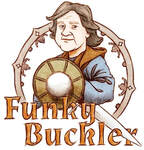|
Today we will continue the series comparing the sword and buckler systems of I.33 and Andre Lignitzer. Today’s post will be discussing the third play from Lignitzer and comparing it to cross nine of I.33. As a reminder, I.33 starts each of its 40 plays with a cross in the top left of the image. To compare Lignitzer’s system with I.33, a cross that is most similar to Lignitzer’s play will be selected. If the sixth play in I.33 is referenced, then it will be identified as cross 6. Why Cross 9 Was Selected For ComparisonCross 9 was selected because of its advice to cut while in the bind. This is one of the core actions in I.33 that can occur when two fencers are bound with their swords high. In practice, this is the bind that occurs when two fencers deliver high cuts to each other or if a fencer cuts into an opponent using halfshield or upper schutzen. The play also includes how to defend against the cut to either the right or the left by advising the fencer to retreat their sword under the arm and then to reach out and strike. This appears to be a similar action to the Wechselhaw (changing cut) that appears in the Lignitzer system. Comparing Lignitzer Play 3 to I.33 Cross 9
The SimilaritiesFrom a I.33 perspective, there is a level of interpretation required to see the flow and similarities between these two plays. In I.33, the fencer from the starting bind can cut to either the right or the left, or to deliver a tread-through from the starting bind. To defend against the cut to the right or left, the fencer moves their word under their arm then reaches out and strike. If this is indeed the Wechselhaw discussed in Lignitzer’s system, then the start of the Lignitzer play is the middle of the I.33 play. However, in the event the I.33 fencer defends against a cut to the left or right from the bind by changing through to attack, the fencers will end in the same bind they started in. The main difference being that the side the fencers are bound on will be reversed from when they started. From there, the fencers again can attack left or right, or perform a tread-through. The art in I.33 depicts a fencer cutting into their opponent’s arms while passing through the buckler. The fencer delivering the tread-through is also illustrated as having their sword and buckler separated while passing to strike the opponent. This appears to be a similar action to “turn uncovered, and push in to the mouth” advised by Lignitzer. The DifferencesBased on the art of I.33, the bulk of the contact with the tread-through appears to be delivered into the opponent’s hands instead of the head, as Lignitzer advises. However, the blade of the fencer delivering the tread-through in I.33 does show their blade past their opponent’s head, which could be the pushing action Lignitzer advises. If this is the case, then the techniques described are similar between the two systems. The main difference is how it is presented, with Lignitzer emphasizing the chaining of attacks, while I.33 emphasizes the variety of options that can occur from the same bind. However, another big difference is the defense against the action, which is similar to what was seen in the analysis of Lignitzer’s second play. I.33 again shows a binding action to defend against the action as opposed to raising the sword and buckler like the opponent does in Lignitzer’s play. However, this is a small difference given the fact that the raising of the sword and buckler defense described in Lignitzer results in the legs being attacked, so it's quite possible binding against the pushing attack is advisable in both systems to avoid the following action. Closing ThoughtsBoth systems recognize the attacks that can be done after a bind has taken place. While I believe the other plays in I.33 generally move away from cuts after the bind, instead favoring to secure the opponent’s sword with binding actions to hit the opponent, there is no doubt that cuts from the bind are prevalent in I.33. The difference in these two systems for the plays analyzed today appears to be the different approaches the two sources take in sword and buckler combat. While I.33 shows the options that can occur from this bind, resulting in overlap with Lignitzer, Lignitzer takes this idea to the next level by showcasing a string of actions that can be used to create openings against the opponent.
Next post in the series: Comparing I.33 and Lignitzer: Play IV
0 Comments
Leave a Reply. |
Proudly powered by Weebly


